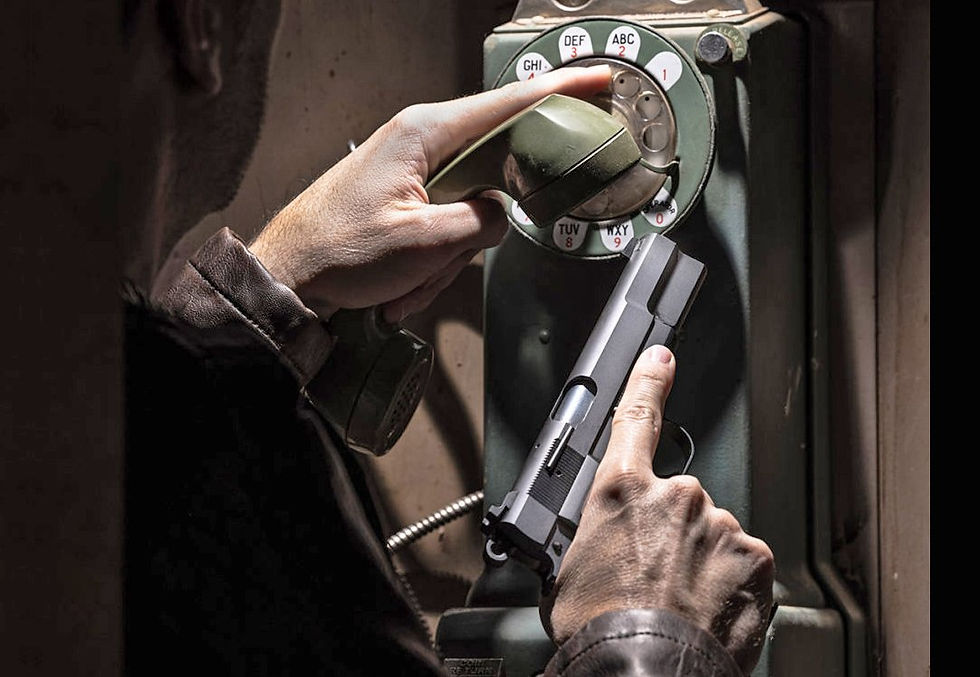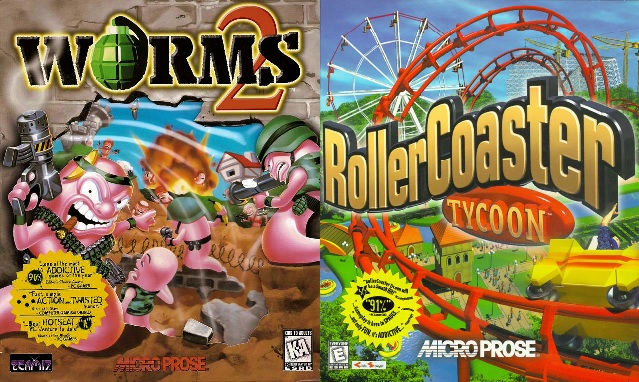John Brown[ing]'s Ghost Starts a New Revolution in Time for Halloween
- baronsfel001
- Oct 26, 2021
- 6 min read

Image is borrowed from The MagLife Blog of GunMagWarehouse, a handy firearms magazine specialty supply house based right here in the Dallas-Fort Worth Metroplex. This was the best old school image I could find on short notice since this is still breaking news. Please note thanks and all due credit as well as the author's endorsement of this Texas-based business who frequently has good inventory and ships everywhere; said endorsement is the author's own and not bought or otherwise compelled.
This is so big I am self-compelled to write about it, because this is one unicorn I had pursued in vain for years then, just as I had already long written off the possibility, the prize blasts onto the market: a US-made product-improved take on the Browning Hi-Power. More significantly, it comes from a company I had likewise written off because of their mixed track record of parts sourcing, production quality and an episode several years ago that brought into question their sincerity in standing for gun rights. As I write this I am still absorbing the impact of this revelation and vowing I will make no purchasing decisions until I am more level-headed.
Springfield Armory's presentation on their new pistol, designated the SA-35, urges not call it by the term "classic." Well, apologies in advance to them (or not, not sure such is even due), but the Retro Baron of Texas takes class seriously and improving on the final masterpiece of John Moses Browning himself just oozes class. What really makes it hard to keep feelings straight about the whole thing is the price: mere $699 MSRP for a better shooter than good condition European originals going secondhand (if they can be found at all) for at least twice that much.
There is one thing about myself not disclosed before that I will pick this time to do so: I am not a big fan of the 9x19mm Parabellum. I do not own anything that chambers Luger's combat cartridge because up to this point I have consciously avoided doing so. It is not because of too much affinity for competing calibers: even though .45 ACP and .357 Magnum in particular score bigger points in my book for their proven power I prefer caliber diversity in general because one never knows when supply will tighten. It is certainly not because I refuse to see its assets, though that gets closer to the truth: I will acknowledge in terms of modern defensive ammo that 9mm keeps up with most other popular choices while offering lighter recoil and greater capacity than much of the rest of the semi-automatic world.
It is simply this: for the relative positives it offers and roles it is meant to fill, I have found 9mm lacking and cannot fully grasp the reasons for its mass acceptance. In terms of price 9mm is touted as the best buy and that point is conceded when the subject is standard full metal jacket, however defensive ammo is a different universe from ball; not only is the price of self-defense rounds far more equivalent over different calibers, but virtually any conceivable civilian defense shooting scenario will end one way or another with fewer rounds fired than to make 9mm a greater asset in terms of capacity. Some decades ago the FBI replaced 9mm with .40 S&W (and police agencies nationwide followed) only to recently reverse that trend due to evolving bullet technology bringing 9mm back on par for single-shot stopping power (and police agencies nationwide are following them); to that I point out that most of us are not police nor have any reason to think like police when it comes to our defensive arms. In the compact carry realm 9mm is theoretically an ideal upgrade to the power of .380 ACP and below, but only if the increased recoil is an acceptable compromise.
I had been thinking of 9mm as the jack-of-all-trades-master-of-none in the firearms world yet knowing for the sake of meeting my caliber diversity requirement I would have to get at least one someday as it is no question of 9mm being the easiest handgun round to stock up during better times. Even when the poor performance of military ball is considered what must also be is that military situations are often very different from personal defense and no one can miss enough to win a gunfight. In fact, Browning's first semi-automatic pistol developed for a US military contract was the M1900 chambered in .38 ACP (.38 & .357 caliber is the American equivalent of overseas 9mm of all types, Parabellum and otherwise, as all their bullet diameters fall between .354 and .358 inches). Even though experience in the Philippines biased the US military against anything less than .45 caliber, .38 caliber would remain popular among civilians and police for decades with notably little commentary on stopping power or lack thereof.
When Browning finished his stint with Colt (which had produced a series of designs culminating in the timeless M1911) he decided it would be best to continue his developments within the friendlier grounds of his other chief contractor, Fabrique Nationale (FN) Herstal of Belgium, and began work on what was going to be his final project. Browning died in 1926, well before his design could be fully-realized, and the banner was carried on by his protégé Dieudonné Joseph Saive (who would earn his own worldwide fame years later as designer of the FAL battle rifle). It was Saive's idea to give the Hi-Power its distinguishing feature of the time, the high-capacity double-stack magazine; Browning had 15 rounds in mind, though the production models were standardized at 13. The Browning Hi-Power is among the most famous firearms in history and further general information on it is available from numerous sources.
FN Herstal is still operating in Belgium (their US factory established for fulfilling military contracts builds some unique designs but had absolutely nothing to do with the Hi-Power), and just a few years ago they discontinued the Hi-Power. Even during its long production run and numerous clones, with one possible exception (the Browning BDM series is questionable as it adopts the aesthetics of the Hi-Power but not the actual design) there was never such a thing as an American-made Hi-Power...until now. Attempting improvement of the masterpiece of such a pioneer as Browning would be a risk under any conditions, but particularly in today's gun market with numerous alternatives for comparison and scrutiny swift and harsh. Upon reflection, Springfield Armory is one of the most appropriate candidates for such a move: not only are they among the number of companies who achieve success improving on Browning's other semi-auto masterpiece, but they were the ones to take the plunge of redesigning the 1911 around 9mm thereby solving the problems that had been hanging over that combination since it was first offered by original designer Colt many decades ago.
Even I have to admit 9mm, like .45 ACP, is among the few cartridges equally functional in both Classic and Tactical applications; thus I have never ruled out getting platforms for one or both, and in multiple types (9mm being a lighter round gets significant velocity benefit from carbine-length barrels). However it was a question of, if Classic, what the choice would be as too high a price rules certain options out for this busy family man. While the 1911 is a winner in that category 9mm is still not its ideal chambering for reasons that are worth a blog post of their own (some can be found online that explain the matter much better than I can). Whether I decide down the line to go for it or not at least a new prominent option is now out there and, if initial reviews are any indication, the SA-35 would definitely be the kind of shooter I can count on if needed but otherwise it certainly looks the part and supports American arms production.
Warning: anecdote ahead. What can be considered to have really succeeded the Browning design? So many modern semi-auto pistols now possess the same basic operating mechanism, though there is a demarcation at the point of the French military contract which the Hi-Power was invented for but ended up losing to the M1935 made by Swiss designer Charles Petter. It is known the Petter-Browning system reached the zenith of its original form in the SIG P210, which was in turn succeeded by the "SIG Sauer System" in the P220 of which that line is still going strong today. What is not so known is Hi-Power, who got whored out to pretty much everyone (including US special operators) over the next four decades, found temporary solace in Czechoslovakia where it produced an illegitimate child named CZ 75.
Embracing the gravity of what it had done behind the Iron Curtain Hi-Power ventured back West in search of forgiveness, peace, and possible retirement. Once the Warsaw Pact fell, CZ 75 took advantage of this new freedom and also went West trying to follow in its parent's footsteps. Details are uncertain, but while CZ 75 returned years later to what is now the Czech Republic and started its own family, rumors abound of an affair having occurred with one of the Tanfoglio clan in Italy and a new progeny calling itself "Witness" seeking a share of Hi-Power's inheritance...
Springfield Armory's official page for the SA-35: https://www.springfield-armory.com/sa-35-series-handguns/sa-35-handguns/
The MagLife Blog entry cited above: https://gunmagwarehouse.com/blog/sa-35-calling-back-to-the-p-35-hi-power/
The website of avid shooter and firearms history student Stephen A. Camp, includes perhaps the most comprehensive data on the Hi-Power available online: https://www.hipowersandhandguns.com/





Comments